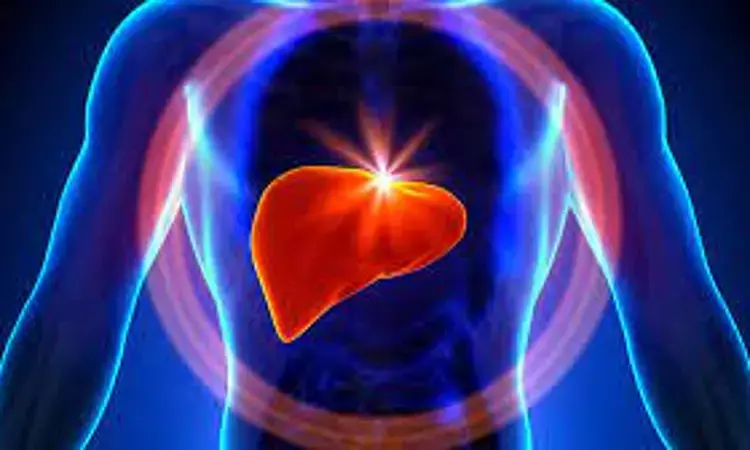- Home
- Medical news & Guidelines
- Anesthesiology
- Cardiology and CTVS
- Critical Care
- Dentistry
- Dermatology
- Diabetes and Endocrinology
- ENT
- Gastroenterology
- Medicine
- Nephrology
- Neurology
- Obstretics-Gynaecology
- Oncology
- Ophthalmology
- Orthopaedics
- Pediatrics-Neonatology
- Psychiatry
- Pulmonology
- Radiology
- Surgery
- Urology
- Laboratory Medicine
- Diet
- Nursing
- Paramedical
- Physiotherapy
- Health news
- Fact Check
- Bone Health Fact Check
- Brain Health Fact Check
- Cancer Related Fact Check
- Child Care Fact Check
- Dental and oral health fact check
- Diabetes and metabolic health fact check
- Diet and Nutrition Fact Check
- Eye and ENT Care Fact Check
- Fitness fact check
- Gut health fact check
- Heart health fact check
- Kidney health fact check
- Medical education fact check
- Men's health fact check
- Respiratory fact check
- Skin and hair care fact check
- Vaccine and Immunization fact check
- Women's health fact check
- AYUSH
- State News
- Andaman and Nicobar Islands
- Andhra Pradesh
- Arunachal Pradesh
- Assam
- Bihar
- Chandigarh
- Chattisgarh
- Dadra and Nagar Haveli
- Daman and Diu
- Delhi
- Goa
- Gujarat
- Haryana
- Himachal Pradesh
- Jammu & Kashmir
- Jharkhand
- Karnataka
- Kerala
- Ladakh
- Lakshadweep
- Madhya Pradesh
- Maharashtra
- Manipur
- Meghalaya
- Mizoram
- Nagaland
- Odisha
- Puducherry
- Punjab
- Rajasthan
- Sikkim
- Tamil Nadu
- Telangana
- Tripura
- Uttar Pradesh
- Uttrakhand
- West Bengal
- Medical Education
- Industry
Pure laparoscopic donor right hepatectomy as good as conventional open hepatectomy: Study

Pure laparoscopic donor right hepatectomy (PLDRH) provides similar operative outcomes for the donor than conventional open donor right hepatectomy, according to a recent study published in the BMC Surgery.
Pure laparoscopic donor right hepatectomy (PLDRH) can provide better operative outcomes for the donor than conventional open donor right hepatectomy (CODRH). However, the complexity of the procedure typically makes transplant teams reluctant to perform it, especially in low-volume transplant centres. Researchers compared the outcomes of PLDRH and conventional open donor right hepatectomy to demonstrate the feasibility of PLDRH in a low-volume transplant program.
Researches carried out a retrospective study of adult living donor liver transplantation in Chiang Mai University Hospital from January 2015 to March 2021. The patients were divided into a PLDRH group and a CODRH group. Baseline characteristics, operative parameters, and postoperative complications of donors and recipients were compared between the two groups.
Results of the study are:
Thirty patients underwent donor hepatectomy between the dates selected (9 PLDRH patients and 21 CODRH patients). The baseline characteristics of the 2 groups were not significantly different. The median graft volume of the PLDRH group was 693.8 mL, which was not significantly different from that of the CODRH group (726.5 mL) The PLDRH group had a longer operative time than the CODRH group, but the difference was not statistically significant (487.5 min vs 425.0 min, p = 0.197). The overall complication rate was not significantly different between the two groups (33.3% vs 22.2%, p = 0.555). Additionally, for the recipients, the incidence of major complications was not significantly different between the groups (71.3 vs 55.6%, p = 0.792).
Thus, the researchers concluded that even in the context of this low-volume transplant program, whose staff have a high level of experience in minimally invasive hepatobiliary surgery, PLDRH showed similar results to CODRH in terms of perioperative outcomes for donors and recipients.
Reference:
Comparative outcomes of pure laparoscopic and open donor right hepatectomy: the first report from a Southeast Asian transplant center by Worakitti Lapisatepun, et al. published in the BMC Surgery.
https://bmcsurg.biomedcentral.com/articles/10.1186/s12893-022-01507-0
Dr. Shravani Dali has completed her BDS from Pravara institute of medical sciences, loni. Following which she extensively worked in the healthcare sector for 2+ years. She has been actively involved in writing blogs in field of health and wellness. Currently she is pursuing her Masters of public health-health administration from Tata institute of social sciences. She can be contacted at editorial@medicaldialogues.in.
Dr Kamal Kant Kohli-MBBS, DTCD- a chest specialist with more than 30 years of practice and a flair for writing clinical articles, Dr Kamal Kant Kohli joined Medical Dialogues as a Chief Editor of Medical News. Besides writing articles, as an editor, he proofreads and verifies all the medical content published on Medical Dialogues including those coming from journals, studies,medical conferences,guidelines etc. Email: drkohli@medicaldialogues.in. Contact no. 011-43720751


